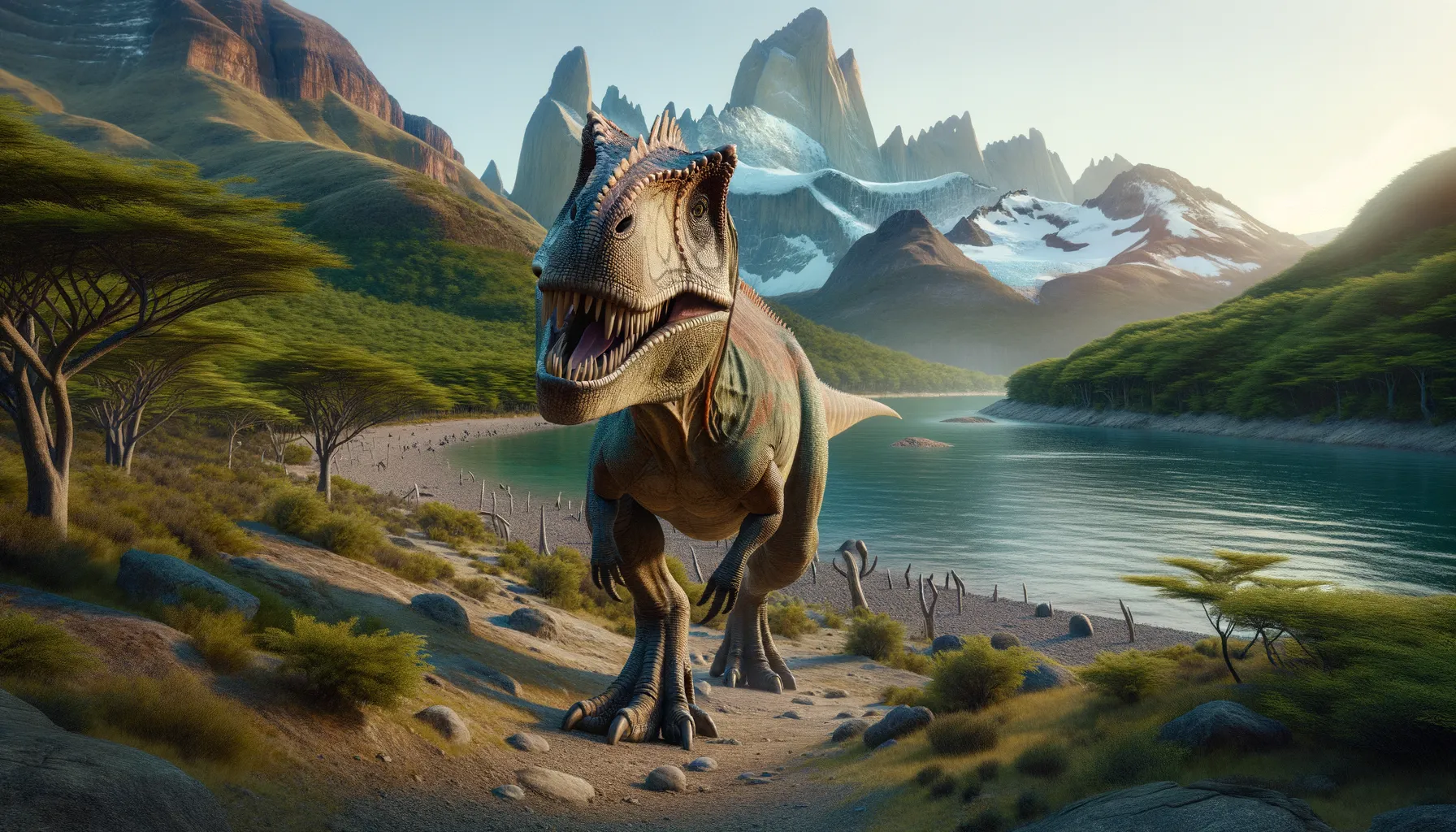
Viavenator
Patagonia's Fierce Late-Cretaceous Predator.
Period
Cretaceous
Length
Measured around 20 feet long.
Height
Stood about 10 feet tall at the hip.
Weight
Weighed approximately one ton.
Viavenator was a medium-sized carnivorous dinosaur that roamed the Earth during the late Cretaceous period. Known for its robust build and formidable teeth, it was a formidable predator in its ecosystem. Its fossils were first discovered in Patagonia, highlighting the region's rich prehistoric diversity. The discovery has provided valuable insights into the evolution and behavior of theropods, a group of dinosaurs closely related to birds.
Diet
Viavenator was a carnivore, preying on smaller dinosaurs and other animals in its habitat. Its teeth and jaws were adapted for gripping and tearing flesh.
Hunting
Viavenator likely hunted alone, relying on its strength and speed to ambush prey. It used its powerful jaws and sharp teeth to deliver a fatal bite to its victims.
Environmental challenges
During its time, Viavenator faced competition from other predators, requiring it to be an efficient hunter. Climate changes and volcanic activity might have affected its habitat, forcing it to adapt to a changing environment. Food scarcity during certain periods posed a significant challenge, influencing its hunting and survival strategies.
Speed
Moderate speed for a theropod, likely agile.
Lifespan
Estimated to be around 20 to 25 years.
First discovery
Discovered in Patagonia, Argentina, in 2015.
Fun Facts
- Viavenator is a dinosaur species that lived during the Late Cretaceous period, around 86 to 84 million years ago.
- Its name, Viavenator, means 'road hunter' in Latin, referring to its role as a predator.
- Viavenator was a theropod, a group of bipedal carnivorous dinosaurs that included the famous Tyrannosaurus rex.
- Fossils of Viavenator have been found in what is now Argentina, providing clues about its habitat and lifestyle.
- This dinosaur was relatively large, estimated to be about 20 feet long and equipped with sharp teeth for hunting prey.
- Viavenator is believed to have been a fierce predator, possibly at the top of its food chain during its time.
- Its discovery has helped paleontologists understand more about the diversity and evolution of theropod dinosaurs in South America.
Growth and Development
Young Viavenators grew rapidly, developing strong muscles and bones to support their predatory lifestyle. Their growth rates were likely influenced by environmental conditions and the availability of food. As they matured, they became more solitary, focusing on territory and hunting.
Habitat
Viavenator inhabited the dry and arid regions of prehistoric Patagonia, which featured open plains and scattered forests. These environments provided ample opportunities for ambush hunting, with plenty of cover. Seasonal rains might have temporarily transformed parts of its habitat, affecting its way of life.
Interaction with other species
Viavenator likely encountered other theropods and herbivorous dinosaurs, leading to competition for resources. Its interactions with prey species were primarily predatory. It may have occasionally scavenged, competing with other predators for carrion.
Natural lifespan
Viavenator's natural lifespan was around 20 to 25 years.
Reproduction
These dinosaurs likely laid eggs in nests, with females possibly guarding the nests until hatching. Viavenator may have displayed some degree of parental care to enhance offspring survival. Courtship behaviors may have involved displays or vocalizations to attract mates.
Social behaviour
Viavenator was likely solitary or lived in loose groupings, typical of most theropods. Its interactions with other individuals may have been limited to mating or territorial disputes. It relied on vocalizations or displays to communicate, especially during confrontations.
Fossil locations
Fossils of Viavenator have primarily been found in Patagonia, Argentina, contributing significantly to understanding South American theropod diversity. These findings highlight the rich paleo-biodiversity of the region during the late Cretaceous. The discovery site has been crucial for studying regional prehistoric ecosystems.
